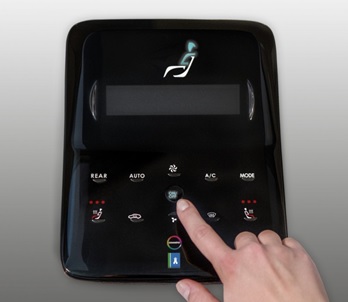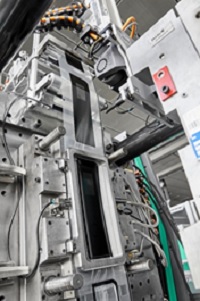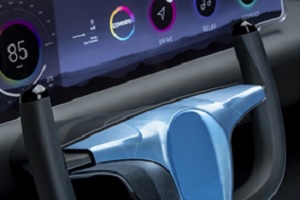As a process for turning out plastic parts and finished products, injection moulding has been valuable and cost-efficient. The surface finishing of injection moulded parts has also seen much improvement over the years in terms of aesthetics and functionality.
As consumer lifestyles become more sophisticated, their taste and preferences also levelled up and this is reflected in their purchasing decisions. Therefore, plastic products should have the trendy look and feel that meet today’s consumer preferences.
Surface finishing and in-mould decoration (IMD) have increasingly taken an important role in making plastic parts more attractive and desirable that options have become widespread. There are now more choices that allow plastic parts producers to create varied texture and eye-catching look to achieve brand differentiation and attract a larger segment of the consumer market. The improvement in design and functionality becomes visible and accessible now more than ever with the right injection moulding process and finishing steps applied. Also, with variations in texture and surface finishing, the ability to eliminate imperfections has been realized, thus reducing production costs.

For injection moulded products that need to achieve certain surface finish – whether glossy, metallized, matte or textured – requirements in designing the products are met by working with the injection moulding machine provider that can tap simulation software to determine the production process and types of materials that need to be mixed to achieve the desired result. Thankfully, injection moulding machinery makers are now capable of recommending the right machinery and processes, while material solutions are available to improve the overall look and properties of injection moulding plastic parts.
In-mould decoration (IMD) trends have seen tremendous upgrade and where injection moulded parts are concerned, there are now virtually an expanded set of appearance options. Aside from allowing for injection moulded products to be infused with images, IMD can create a dynamic fusion of colours, patterns and textures for plastic parts, thus enhancing the decorative element of the injection moulded plastic parts.
Visual appeal and functionality combined
Surface finishing and IMD technologies present great potential for enhancing the visual appeal and functionalization of plastic surfaces. One example is the first joint demonstration of IMD by Arburg and Leonhard Kurz where they presented the in-mould lamination of a control panel for a washing machine. The process was made possible by combining an Arburg Allrounder 820 A and a film feed unit with control cabinet from Leonhard Kurz. In-mould film lamination also means not having to spend time and money re-working injection moulded parts. Designs can be varied and even changed completely in next to no time.

The team utilised an electric Allrounder 820 A with a clamping force of 4000 kN producing control panels for washing machines from transparent MABS in a cycle time of around 60 seconds. The one-cavity injection mould and the foil feed unit, which consists of an unwinder, rewinder and control cabinet, are by Leonhard Kurz. IMD is a continuous roll-to-roll transfer process where the carrier film with the decorative motif is unwound above the clamping unit via a film feed, wiped free of dust with an oilcloth and then pulled through the injection mould, which is fitted with a clamping frame. During in-mould lamination with plastic, only the wafer-thin paint layers are transferred. This means that the component can be recycled easily at the end of its service life. Following unwinding, the carrier material can also be recycled into PET granules.
Many products can be decorated using the process – ranging from trims, panels and center consoles inside cars to operating panels for home appliances and even laptop lids, mobile phone cases and closures for cosmetic products. Beyond decorating the surface of the products, "intelligent" surfaces integrating touch and function are also possible. Interactive displays and touch control panels, for example, can be created by integrating touch sensors in addition to design features.

The automotive industry is one sector that has benefitted from the latest developments in surface finishing. Car interior parts with seamless, intelligent surface have been made possible with the help of Covestro’s DirectCoating technology. Covestro worked with a team of three industry partners: Votteler Lackfabrik GmbH & Co. KG, laser texture specialist Reichle Technology Center and Merck KGaA as a manufacturer of pearl effect pigments. With DirectCoating technology, the coated component is produced in two steps using a polyurethane reaction injection moulding (PU-RIM) process. DirectCoating also offers advantages over conventional coating methods, including a shorter and faster process, no overspray and no need for a separate drying step.
Decorative marbling of injection moulded parts with the patent pending BASF technology is creating a big leap in the appearance of consumer products. The technology is able to produce marbled serial components made of Ultrason® using a standard injection moulding process. The colouring technique opens up unlimited possibilities for designers to use BASF's polyarylethersulfone to colour household appliances, catering bowls and containers as well as visible components. For the first time, surface effects such as colour shades, colour streaks and patterns can be reproduced, thus meeting the market demand for eye-catching household products. The process enables the production of injection moulded parts of one series that may look alike but are not completely identical. With the BASF process, marbling is possible on conventional injection moulding machines equipped with only one plasticizing unit and an open nozzle.
At CHINAPLAS 2022, the efficient production of injection moulded plastic parts and finished products with attractive and functional surface finishing will be demonstrated by leading companies that are known for their expertise in product design and injection moulding solutions. For more information, visit: www.ChinaplasOnline.com.
About CHINAPLAS 2022
CHINAPLAS 2022, one of the most prestigious international plastics and rubber trade fairs, will be held at National Convention and Exhibition Center, Hongqiao, Shanghai, PR China from April 25-28, 2022. The show will gather 4,000+ international exhibitors under one roof and welcome visitors from all around the world to grasp business opportunities generated from the economic recovery. To cope with the fast-changing global sourcing conditions without travelling under the pandemic, overseas buyers are now able to connect with thousands of materials and machines suppliers via CHINAPLAS eMarketplace, a smart efficient integrated, and sustainable online sourcing platform which is complementary to the physical show of CHINAPLAS. For more information, please visit: www.chinaplasonline.com














